Felt IA 16
What is an entry-level tri bike? The answer to this has changed a lot in the 16 years Slowtwitch has been in existence.
In my mind, it is more a price than a technical designation. I feel this way about all bikes, by the way. I don’t feel that an entry level road bike is a bike made with so-called Gran Fondo geometry. Rather, if someone asks me what his first bike ought to be I think it always ought to be a bike that fits well, regardless of the price silo. I don’t feel an entry-level bike, whether tri or road, needs to be detuned. Laid back. Non-aggressive. Unless the customer is. I haven’t found many laid back, unaggressive triathletes in my 35 years in the sport, and I don’t think their bikes should be either. Whether the first or the fifth bike you own, it ought to fit, it ought to be comfortable, it ought to maximize your ability to deliver power to the road.
Entry-level is a price assumption. It may be that your first tri bike is not entry-level because you want to pay $5,000 for your first tri bike. Bless your heart and will that be cash or charge? There is no reason not to buy this bike. It is no harder to ride than the cheaper bike. It’s just that most folks buying their first anything don’t go straight to the expensive version, hence the entry-level descriptor.
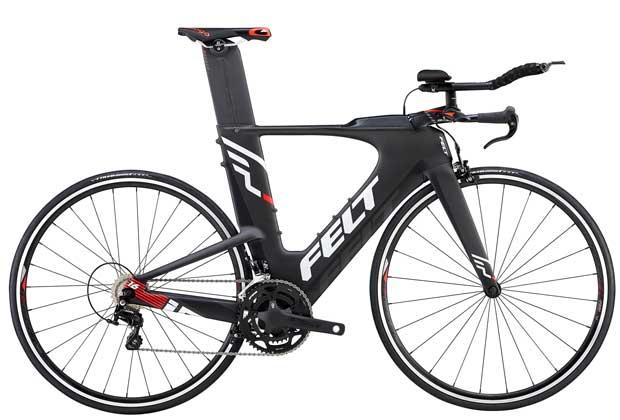
$2,200 to $3,000
This is the price cut-off for entry level, for me. Pretty high cut-off, you might say. Yes. But I didn’t just pick this out of the air. Bike makers aren’t making bikes that sell for $1,800 because they won’t sell. Our sport has a quality and features threshold below which customers won’t spend. Because of the ability now to buy on the secondary market (eBay, the Slowtwitch Classifieds forum) folks who only want to spend $1,500 will search for a pre-owned bike that originally sold for $4,000.
They will spend, oh, $2,200. If we’re talking street price – the real price a new bike is widely available for purchase – then $2,200 is a pretty good place to start. Let’s begin the discussion of the bikes for sale in these price points, which I’m quoting in U.S. dollars and you’ll need to convert if your currency is something else.
Felt IA 16
It is not a coincidence that what you’re reading right now is published on this very day. I did not want to write about this category without mentioning a bike I knew was coming, and this is that bike. Its existence has been embargoed until today.
Starting with the Cervelo P3 in the early 2000s the focus moved away from the groupkit and to the frame. Before this the price and the sizzle revolved around how much Ultegra is on a bike, how much Dura Ace, and the frame was less a material concern by purchasers. Cervelo forced consumers to consider the frame first, the parts second. If you don’t have a compelling platform, or chassis, a builder can stick whatever parts he wants on his bike and it won’t sell. The IA has been deemed a worthy platform by customers.
Felt and Cannondale, with a bike that I’ll profile next, have together blown up another paradigm. Prior to 5 or 6 years ago it was hard for a bike maker to get sales value out of a female pro triathlete’s accomplishments. Cannondale and Felt have variously sponsored Chrissie Wellington, Mirinda Carfrae and Daniela Ryf, and each brand has ridden these athletes to success as these women have ridden these brands’ bikes. Mirinda and Daniela have been Felt’s one-two punch even as Felt has not had marquis males aboard their bikes, along with trading slightly down in prestige from what was an annual Grand Tour presence to teams that don’t often participate in Grand Tours. Daniela and Mirinda have kept Felt not only relevant but prosperous in triathlon.
The IA 16 does use the same manufacturing features and techniques that more advanced bike factories use, notably what Felt calls its InsideOut construction. This is simply the use of internal molds, so that the inside of the frame’s walls don’t look like a beehive with dreadlocks; rather it’s smooth and almost as finished as the outside of the bike. This reduces weight, limits stress risers, and makes for a more uniform saturation of resin in the carbon, important when a bike maker reduces thickness in the wall to keep these large surface area frames as light as possible.
I went over the layup schedules of these bikes with Felt engineer Jeff Soucek about 6 months ago. These layup schedules tell the story of just how much goes into various Felt frames. Two frames can appear identical, but one might have a 4-page schedule the other a 16-page schedule. It’s like looking at two SUV tires, and one is 10-ply and is load range E and the other is 4-ply and you don’t even want a heavy passenger in the next seat. But they look the same from the outside. Same with bikes.
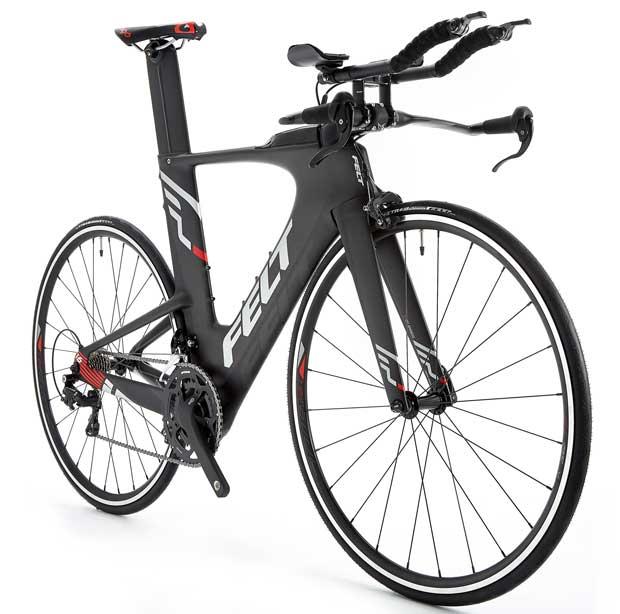
So, what is this Felt frame in the IA 16? Middlin’. It’s got those internal molds, which are hard as heck to fish out after the frame is cooked, but makes for a nice bike. It seems the same carbon, and same schedule, as the IA 10. Same frame. This is a semi-superbike. The higher-priced IA bikes, the single-digit series (IA 1 through 4) have an integrated fork and brakeset in the front. Very sexy. The IA double-digit series (10, 14, 16) have a standard fork with external front brake. If you TriRig the front brake, you have pretty close to an aerodynamic duplicate of the sexy integrated Felt IA bikes. Which is right for you? Do you just want to go fast? Either will work. Feel sexy? Felt single digit.
Felt’s modus operandi is to deliver the most spec for the least price around a top-rung frame. The IA 10 is a sub-$5,000 complete bike that is electronically shifted. For Felt not to have a $5,000 electronic tri bike would be like Alabama University deciding it didn’t need a winning football program. The IA 16 is another one of its stake in the ground, shot across the bow, message to the industry, “Smoke that,” moments.
How does Felt get to sub-$3,000? Shimano 105 F and R derailleurs, Microshift mechanical shifters which are typically considered as good or better than Shimano bar-end shifters but don’t cost as much. I like the 50×34 choice for chain rings, as you’re going to be happy you have that 34t ring more than you’re going to miss the 53t ring. The 11-28 11sp cassette will come in very handy for those racing Wildflower or Savageman or anything where you’ll see that steep pitch somewhere in the bike course. Having to muscle up a pitch with an overgeared bike takes a lot out of you, and you’ll feel it in the run.
It is my understanding that the FSA crank used here is a true BB30 crank, that is, it's not a 90mm-wide crank with 11mm spacers on each side if the bike is designed with a true 68mm-wide bottom bracket. That sounds highly technical, doesn't it? If you aren't following what I just wrote, don't worry. What I just explained is a good thing.
Felt makes its own aerobars. It’s done a nice job over the years. One of Felt’s engineers is a former engineer for Profile Design, so it’s got in-house experience in aerobars. Its bar pedestals under the pad, and the extension pedestals with the pad. This is mandatory nowadays, but that doesn’t mean every bike offers this feature. Will you be comfortable on the OE spec Prologo Zero Tri PAS T2.0 saddle? I don’t know. Prologo is trying. Or tri’ing. It’s giving it a shot. Still, you may end up on a Fizik Tritone, an ISM or a Cobb saddle when it’s all said and done.
There is one stem. Period. This is going to cause a little consternation among purists. Let me stipulate that in the aero position, this bike only needs that single stem length and pitch. There’s plenty of adjustability to get the position you want. How does one stem limit you? Various pitches would raise the pursuit position as the pads raise. But you can flip this pursuit bar, so that instead of a slight decline there’s a slight raise in the pursuit position. This will drive your LBS nuts if he needs to flip the bar, but, that’s what he’s there for, right? The one problem with the flippable pursuit bars is that you can’t put any upturn at the end. But Felt does make a nifty little rubber grip that has a nub at the end you can brace yourself against when you descend or brake.
The stem itself is 90mm long. If I’m going to make one stem, this is the length. The one limiter is that you can’t adjust the distance between the steering axis and the pursuit position, except by changing frame size. I would worry about this more if the chosen OE stem was 110mm long, or if the pursuit bars themselves were more swept forward than they are. All in all, I can live with the one stem length.
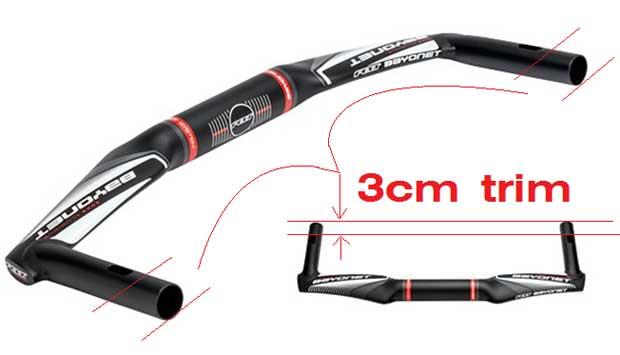
I lied. There is one more way to adjust pursuit position v the steering axis. One benefit to pursuits that don’t upturn is that you can trim the end. Cut off some of the length. Felt’s pursuit bar does allow you to do this. Again, bring your LBS mechanic a skim milk latte as you roll your bike in – these are not trivial tasks.
Who will this bike fit? It’s not a low geometry, but it’s not a tall geometry either. Consider other tri bikes that are aerodynamic, but still accept a standard stem. If you look at what we might call size-56cm or thereabouts, and I’m saying this is a frame with about 425mm of reach, the stack for a bike this long is 537mm for this IA, 540mm for a Cervelo P2 or P3, 540mm for a Quintana Roo PR5.
Cannondale’s Slice has a stack of 547mm for a frame with a reach of 420mm, and 567mm for a reach of 435mm, so as you see the Slice is slightly taller than the IA and these other bikes per their reaches (and I offer this just for comparison). This is where spec does play a part. The Slice is spec’d with a low-profile Visiontech aerobar that provides some “lowness” to compensate for the frame’s stack being a slight bit taller.
What is the profile of the IA 16 owner? Who should buy this bike?
The successful IA owner is the athlete who is looking for a truly aerodynamic, fast, performance bike and who is willing to give up electronic shifting to save money. High-end, high-priced mechanically-shifted bikes are almost now oxymoronic. If you’re going to buy a mechanically shifted bike it either needs to be a 1x, or a bike like this, where the bike is almost half-price and that savings is almost solely because of subbing in mechanical for electronic.
The successful owner of an IA 16 will already have his race wheels or has a plan for race wheels, that is, he does not expect the wheels to come spec’d as original equipment.
The successful owner of this bike will be tall enough so that he or she does need a 650c-wheel bike to achieve a low enough position. In truth, this bike gets you pretty low. It’s got a stack in its smallest size of 467mm and it used to be that a stack under 500mm was unheard of and unobtainable in a 700c-wheel bike. Not so anymore. The reach is 380mm, not overlong. In former times I’d have said anybody under 5’6” should be on a 650c bike for triathlon. This bike probably will work with most folks down to 5’3”, maybe 5’2”. If you look at Rinny, she could be lower, but it’s not because her 700c-wheel Felt IA does not go lower. That is just the position she chooses.
Finally, this is a great bike that can be a platform for an even better bike. Right now bikes like the Cervelo P2 are the beginnings of souped-up bikes, and this is another. The question is whether this will be released as a bare frame. If so, I can imagine a price of $2,000 or so. But, I don't know. Until then, yank the parts off this bike you don't want (front brake? wheels and tires?) replace them with what you want, and you've got a nice, very fast, street rod at a great price.


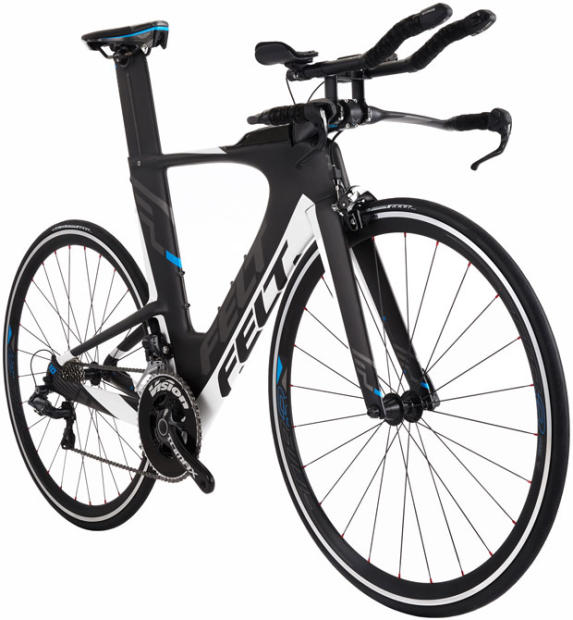
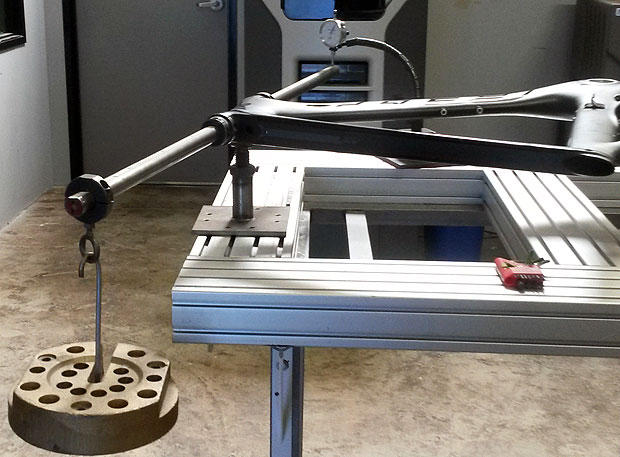
Start the discussion at slowtwitch.northend.network